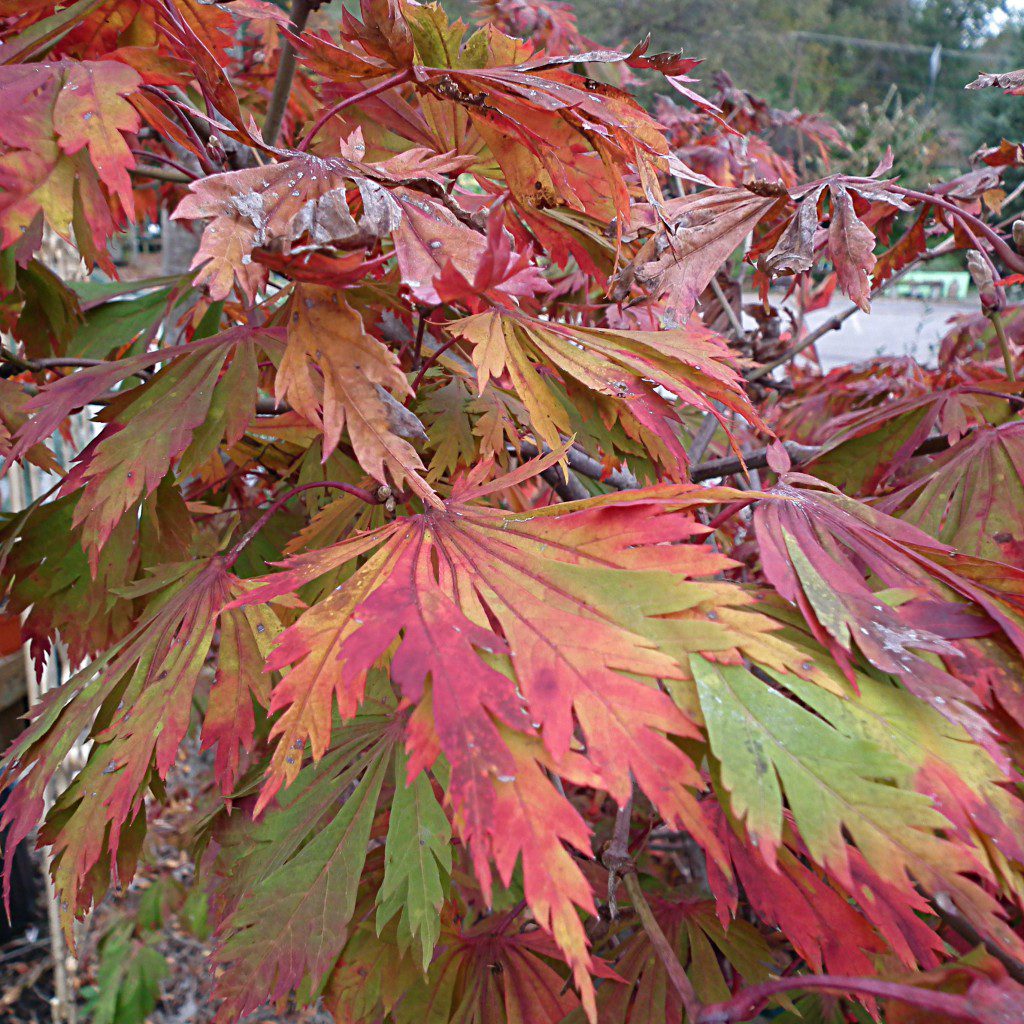November is an excellent month to be grateful for things, well, actually every month should be a month that you’re grateful…but this month is especially important. Looking around you can see beauty everywhere, even in the ugliest places. Take for example that mud puddle, you can look at it and see the mud, or you can look at it and be thankful for the rain that fell that made that puddle, and at the same time watered and nourished your plants.
You can look at the leaves that have fallen from your trees and curse the fact that you have to rake them up OR you can look at those leaves that have fallen and realize that after a few months they’ll decompose into some rich organic matter fortified with nitrogen and the potential of being a really great top dressing. Keep in the sunny side, my friends!
Featured this month, we’ve got a selection of plants that are really worth being thankful for, featuring a couple that will surprise you when you find out what they actually are!

This month we’re featuring: Perennial Plumbago, the Full Moon Maple, Witch Hazel, Blueberries, Goldmound Spirea, Tea Camellia, and Black Bamboo.

Astounding colors of yellow, orange, red and green all pop out of this leaf at the same time and continues to display this palet of color throughout the fall. The shocking variety of colors makes it superior to most of the other maples on the market. A smaller sized maple, growing about 25′, will make for an excellent small garden tree, accent piece or even a container plant.

Ceratostigma plumbaginoides- or to those non-plant nerds, perennial Plumbago is one of our favorite groundcovers for hardiness and attractiveness. Brilliant blue flowers with striking red calyces cover bright green foliage from mid-summer to fall, when the leaves turn deep red. A wonderful groundcover, it is a great choice for beds of spring bulbs because it emerges late, as the foliage decided to hibernate for the winter. Wonderful for placement under trees and as a mass planting.

Believe it or not, Blueberries are one of the easiest fruit bearing plants out there to grow. Not only can they treat you to a delicous snack in the summer, in the fall it will provide you with a feast for the eyes. Magnificent dark redish burgundy foliage appears once the temperatures start to dip down. These aren’t just for gardens, the blueberry actually makes a very attractive hedging or accent plant!

This shrub does lose it’s leaves in the winter, but it’s soooo worth it for the rest of the year. In the late spring clusters of pink blooms appear to cover the shrubs glowing yellow foliage. The new growth takes on a fantastic copper color throughout the growing season. When it decided to be done for the season, the colors of fall inundate this dwarf shrub with shades of red, orange and yellow.

“Poncirus trifoliata” is a large, semi-evergreen shrub or small tree. Poncirus is capable of self-pollination, and seedlings will germinate from rotten fruits, which means they’ll spread quick, but worth while. The thorns of Poncirus are stout, hard, and extremely sharp, sometimes reaching a length of more than an inch or two. The thorns are mean, very mean, and will tear up anybody who dares to tangle with them. Excellent for use to keep people out of areas that they don’t belong. The fall color is a magnificent yellow color and the fruits, although they’re not edible, make excellent decorations for the holidays, such as making a gumball tree. (Ask Michael, it’s his thing).

You can easily add a brilliant splash of color to your autumn landscape with witch hazels. One of the cyber geeks all time favorite plants, the witch hazel can demonstrate fall colors ranging from creamy yellow to eye burning red. Another perk is that they bloom after everything else has decided to give up for the year. The flowers resemble the flowers of the Chinese Fringe Flower, but are colors including yellow and red.

For all of you tea drinkers out there, what would be better than growing your very own tea leaves in your backyard? You can do it, it’s pretty simple actually. Planting a tea camellia you can harvest the leaves to make your very own brew.
Beyond just the drinkability, you can enjoy the sweet little flowers that cover this plant in the fall, blooming with some of the sasanqua camellias. The buds appear like little pearls dangling from the branches and the flower itself looks as if it were painted on silk. The tea camellia is an underused, misunderstood evergreen plant.

With jet black pole-type branches and feathery green leaves, this is perhaps our favorite bamboo. Under ideal conditions Black Bamboo will grow to 35 feet in height with poles over 2 inches in diameter, but 25 feet is its average height in our area. These are fantastic for naturalizing areas and also for containers. The black stems are very unique and great for arrangements.





